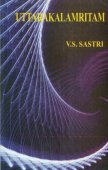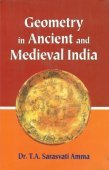Shripati, Śrīpati, Sṛpāṭī, Shri-pati: 13 definitions
Introduction:
Shripati means something in Hinduism, Sanskrit, Jainism, Prakrit, Marathi, Tamil. If you want to know the exact meaning, history, etymology or English translation of this term then check out the descriptions on this page. Add your comment or reference to a book if you want to contribute to this summary article.
The Sanskrit terms Śrīpati and Sṛpāṭī can be transliterated into English as Sripati or Shripati or Srpati, using the IAST transliteration scheme (?).
In Hinduism
Pancaratra (worship of Nārāyaṇa)
Source: archive.org: Isvara Samhita Vol 1Śrīpati (श्रीपति) refers to one of the various Vibhava manifestations according to the Īśvarasaṃhitā 24.272-276.—Accordingly, “the husband of Śrī, Lord of Gods, who is of a brilliance like the interior of the lotus is to be meditated upon. His two hands are beautified by conch and discus. The other (hands) are offered to lead the Goddess (around the fire) as if in sport. He reveals that He has no matter, as I am the support for it. It is its own self in the middle by holding which, those who are bent upon clear meditation, cross over shortly and easily the sea of guṇas (Guṇodadhi), which is hard to cross”.
These Vibhavas (e.g., Śrīpati) represent the third of the five-fold manifestation of the Supreme Consciousness the Pāñcarātrins believe in. Note: Guṇodadhi refers to the sea of guṇas, guṇas here are Sattva, Rajas and Tamas, which belong to Prakṛti, the sea udadhi is made up of matter which suffers humanity.

Pancaratra (पाञ्चरात्र, pāñcarātra) represents a tradition of Hinduism where Narayana is revered and worshipped. Closeley related to Vaishnavism, the Pancaratra literature includes various Agamas and tantras incorporating many Vaishnava philosophies.
In Jainism
General definition (in Jainism)
Source: academia.edu: Tessitori Collection I1) Śrīpati (श्रीपति) or Śrīpatikathā refers to one of the 157 stories embedded in the Kathāmahodadhi by Somacandra (narrating stories from Jain literature, based on the Karpūraprakara), which is included in the collection of manuscripts at the ‘Vincenzo Joppi’ library, collected by Luigi Pio Tessitori during his visit to Rajasthan between 1914 and 1919.—The Kathāmahodadhi represents a repository of 157 stories [e.g., Śrīpati-kathā] written in prose Sanskrit, although each of them is preceded by a verse. Together, they stage a large number of Jain characters (including early teachers). [...]
2) Śrīpati (श्रीपति) is the author of the Pārśvanāthavivāhalu (dealing with Pārśva in Jain literature).

Jainism is an Indian religion of Dharma whose doctrine revolves around harmlessness (ahimsa) towards every living being. The two major branches (Digambara and Svetambara) of Jainism stimulate self-control (or, shramana, ‘self-reliance’) and spiritual development through a path of peace for the soul to progess to the ultimate goal.
Languages of India and abroad
Marathi-English dictionary
Source: DDSA: The Molesworth Marathi and English Dictionaryśrīpati (श्रीपति).—m (S Lord or husband of śrī, i. e. Vishn̤u.) A term for a man of wealth and prosperity.
Marathi is an Indo-European language having over 70 million native speakers people in (predominantly) Maharashtra India. Marathi, like many other Indo-Aryan languages, evolved from early forms of Prakrit, which itself is a subset of Sanskrit, one of the most ancient languages of the world.
Sanskrit dictionary
Source: DDSA: The practical Sanskrit-English dictionarySṛpāṭī (सृपाटी).—
1) A kind of measure.
2) A shoe.
3) Base metal.
4) A small book.
--- OR ---
Śrīpati (श्रीपति).—
1) an epithet of Viṣṇu; श्रीपतिः पतिरसाववनेश्च परस्परन् (śrīpatiḥ patirasāvavaneśca parasparan) Śiśupālavadha 13.69.
2) a king, sovereign.
Derivable forms: śrīpatiḥ (श्रीपतिः).
Śrīpati is a Sanskrit compound consisting of the terms śrī and pati (पति).
Source: Cologne Digital Sanskrit Dictionaries: Shabda-Sagara Sanskrit-English DictionaryŚrīpati (श्रीपति).—m.
(-tiḥ) 1. Vishnu. 2. A king, a prince. E. śrī the goddess of fortune or rank, and pati husband or master.
Source: Cologne Digital Sanskrit Dictionaries: Benfey Sanskrit-English DictionaryŚrīpati (श्रीपति).—m. 1. Viṣṇu. 2. a king.
Śrīpati is a Sanskrit compound consisting of the terms śrī and pati (पति).
Source: Cologne Digital Sanskrit Dictionaries: Cappeller Sanskrit-English DictionaryŚrīpati (श्रीपति).—[masculine] = śrīnātha.
Source: Cologne Digital Sanskrit Dictionaries: Aufrecht Catalogus Catalogorum1) Śrīpati (श्रीपति) as mentioned in Aufrecht’s Catalogus Catalogorum:—father of Kṛṣṇajī, grandfather of Nārāyaṇa (Śāṅkhāyanagṛhyabhāṣya). W. p. 33.
2) Śrīpati (श्रीपति):—poet. [Sūktikarṇāmṛta by Śrīdharadāsa]
3) Śrīpati (श्रीपति):—grammarian. Quoted in Prakriyākaumudīṭīkā W. p. 214.
4) Śrīpati (श्रीपति):—astronomer: Candragrahaṇasādhana. Tattvapradīpa. Tithipattranīrājanāvali. Daivajñavallabha (or by Nīlakaṇṭha). Dhīkoṭī. Dhruvamānasa. Padyapañcāśikā. Parvaprakāśa. Muhūrtaratnamālā and—[commentary]. Sārāvali.
5) Śrīpati (श्रीपति):—Prastāvataraṅgiṇī.
6) Śrīpati (श्रीपति):—Śrutikalpalatā, vedānta.
7) Śrīpati (श्रीपति):—Siddhāntaśekhara jy.
8) Śrīpati (श्रीपति):—son of Lakṣmīnṛsiṃha Bhaṭṭa: Ramalasāra.
9) Śrīpati (श्रीपति):—son of Nārāyaṇa, father of Guṇākara (Horāmakaranda).
10) Śrīpati (श्रीपति):—father of Mahādeva (Nibandhasarvasva).
11) Śrīpati (श्रीपति):—grammarian. Quoted by Ramānātha in Manoramā.
12) Śrīpati (श्रीपति):—wrote a
—[commentary] on Keśava’s Jātakapaddhati in 1584. Fl. 291.
13) Śrīpati (श्रीपति):—Prākṛtapiṅgalaṭīkā. Vṛttaratnāvalī.
14) Śrīpati (श्रीपति):—Adbhutasāgarasāra jy.
15) Śrīpati (श्रीपति):—Amarakośaṭīkā Jñānadīpikā.
16) Śrīpati (श्रीपति):—Jātakatattvaprakāśikā.
17) Śrīpati (श्रीपति):—Jyotirvallabhā.
Source: Cologne Digital Sanskrit Dictionaries: Monier-Williams Sanskrit-English Dictionary1) Śrīpati (श्रीपति):—[=śrī-pati] [from śrī] m. ‘lord of fortune’, a king, prince, [cf. Lexicographers, esp. such as amarasiṃha, halāyudha, hemacandra, etc.]
2) [v.s. ...] ‘husband of Śrī’, (śriyaḥ pati) Name of Viṣṇu-Kṛṣṇa ([especially] as worshipped on the hill Veṅkaṭa q.v.), [Varāha-mihira’s Bṛhat-saṃhitā; Śiśupāla-vadha; Bhāgavata-purāṇa]
3) [v.s. ...] Name of the father of Kṛṣṇajī, [Catalogue(s)]
4) [v.s. ...] (also with dvi-vedin, bhaṭṭa, and śarman) of various authors etc., [ib.]
5) Sṛpāṭī (सृपाटी):—[from sṛpāṭa] f. a kind of measure, [cf. Lexicographers, esp. such as amarasiṃha, halāyudha, hemacandra, etc.]
6) [v.s. ...] a shoe, [cf. Lexicographers, esp. such as amarasiṃha, halāyudha, hemacandra, etc.]
7) [v.s. ...] base metal, [cf. Lexicographers, esp. such as amarasiṃha, halāyudha, hemacandra, etc.]
8) [v.s. ...] a small book, [cf. Lexicographers, esp. such as amarasiṃha, halāyudha, hemacandra, etc.]
Source: Cologne Digital Sanskrit Dictionaries: Yates Sanskrit-English DictionaryŚrīpati (श्रीपति):—[śrī-pati] (tiḥ) 2. m. Idem; a king.
[Sanskrit to German]
Sanskrit, also spelled संस्कृतम् (saṃskṛtam), is an ancient language of India commonly seen as the grandmother of the Indo-European language family (even English!). Closely allied with Prakrit and Pali, Sanskrit is more exhaustive in both grammar and terms and has the most extensive collection of literature in the world, greatly surpassing its sister-languages Greek and Latin.
Kannada-English dictionary
Source: Alar: Kannada-English corpusŚrīpati (ಶ್ರೀಪತಿ):—
1) [noun] = ಶ್ರೀನಾಥ [shrinatha].
2) [noun] (jain.) Jina, the spiritual teacher of Jainism.
Kannada is a Dravidian language (as opposed to the Indo-European language family) mainly spoken in the southwestern region of India.
Tamil dictionary
Source: DDSA: University of Madras: Tamil LexiconŚrīpati (ஶ்ரீபதி) [śrī-pati] noun < idem. + pati. Viṣṇu; விஷ்ணு. [vishnu.]
Tamil is an ancient language of India from the Dravidian family spoken by roughly 250 million people mainly in southern India and Sri Lanka.
See also (Relevant definitions)
Starts with: Shripati Agnihotri, Shripati bhatta, Shripati dvivedin, Shripati sharman, Shripati vishnudasa, Shripatibhashya, Shripatibhatta, Shripatidatta, Shripatigovinda, Shripatigrantha, Shripatikatha, Shripatipaddhati, Shripatisamhita, Shripatishishya, Shripatitirtha, Shripativyavaharanirnaya, Shripativyavaharasamuccaya, Shripatiya.
Ends with: Murarishripati.
Full-text (+129): Shripatipaddhati, Shripatigrantha, Shripatisamhita, Shripatibhashya, Shripatigovinda, Shripativyavaharasamuccaya, Shripativyavaharanirnaya, Shripatishishya, Shripatidatta, Shripadi, Shripatiya, Mulashripatitirtha, Murarishripati, Tithiprakarana, Shripati dvivedin, Tithipattranirajanavali, Ramalasara, Jauhotyadika, Daivajnavallabha, Dhikotikarana.
Relevant text
Search found 27 books and stories containing Shripati, Śrīpati, Sṛpāṭī, Shri-pati, Sripati, Srpati, Śrī-pati, Sri-pati, Shripathi, Shreepathi, Shripadi, Shripadhi; (plurals include: Shripatis, Śrīpatis, Sṛpāṭīs, patis, Sripatis, Srpatis, Shripathis, Shreepathis, Shripadis, Shripadhis). You can also click to the full overview containing English textual excerpts. Below are direct links for the most relevant articles:
Garga Samhita (English) (by Danavir Goswami)
Verse 4.15.5 < [Chapter 15 - The Story of the Women of Barhiṣmatī-pura, the Apsarās, and the Women of Sutala and Nāgendra]
Middle Chola Temples (by S. R. Balasubrahmanyam)
Temples in Sitibeta < [Chapter IV - Temples of Rajendra I’s Time]
A History of Indian Philosophy Volume 5 (by Surendranath Dasgupta)
Part 5 - Śrīpati Paṇḍita’s Śrīkara-bhāṣya < [Chapter XXXVIII - Śaiva Philosophy in some of the Important texts]
Part 1 - History and Literature of Vīra-śaivism < [Chapter XXXV - Vīra-śaivism]
Part 1 - The Literature and History of Southern Śaivism < [Chapter XXXIV - Literature of Southern Śaivism]
The Skanda Purana (by G. V. Tagare)
Chapter 195 - The Glory of Śrīpati < [Section 3 - Revā-khaṇḍa]
Chapter 194 - The Marriage of Śrīpati < [Section 3 - Revā-khaṇḍa]
Chapter 28 - Dharmadatta Attains Salvation < [Section 4 - Kārttikamāsa-māhātmya]
The history of Andhra country (1000 AD - 1500 AD) (by Yashoda Devi)
Part 25 - The Later Haihayas < [Chapter II - The Haihayas]
Part 4 - Ambadeva A.D. (1273-1335) < [Chapter XIX - The Kayasthas (A.D. 1220-1320)]
Karmic Astrology—a Study (by Sunita Anant Chavan)
Part 5.2 - Jyotiḥśāstra in the Varāha Period < [Chapter 3 - Development of Jyotiḥśāstra and Karman in the Literature]
Part 2.2.9 - Muhūrta (science of proper times) classification < [Chapter 2 - Jyotiḥśāstra and the Concept of Karman]
Related products


